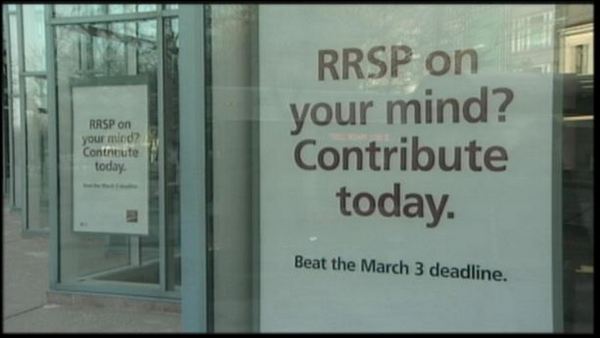
HAPPENING NOW:


[projekktor id=’11671′]
It may not be the most exciting thing to think about, but if you’ve yet to top off your RRSPs for the 2013 tax year — time is running short. The deadline to contribute is this Monday.
If you didn’t have the foresight — or the finances — to put money aside for your 2013 RRSPs, don’t fret. You’re not alone.
“I usually always wait and then decide how much I’m going to put in.”
“We’ve just started doing it on a bi-weekly basis, so now that’s what we’re doing. But I have to admit, we’d tend to leave it to the end of the year and suddenly panic.”
When it comes to investing in your future, GIC and Associates president Ray Kalvaitis says the sooner you can put money aside the better. “The earlier you contribute, the less you have to contribute to maintain your standard of living at retirement.”
But while RRSPs will give you a nice tax return, they’re not for everyone.
“People who have high pensions get to retirement and can be in a higher tax bracket than when they made their RRSP contributions, that’s when they should have used a tax free savings account.”
A Tax Free Savings Account has the same growth protection on an RRSP — but when it comes time to withdraw, you’ve already paid the taxes on the initial investment.
“They grow equally. There is no difference in the middle, it’s just at the ends. So the RRSP is better at the beginning and the TFSA is better at the end.”
If it is the now you’re concerned about, adding to your RRSPs may be the way to go. You can invest as much as 18 per cent of your income, up to $22,000 a year.
“Rule of the thumb is use your RRSP until you’ve reached your limit. And then start using a tax free savings account.”
But for retirement, Kalvaitis suggests saving 10 percent of your earnings in whatever way suits you best.
When it comes to tax free savings Kalvaitis says many people assume it has to be a daily interest account — but that’s not the case. If you’re using it as a long-term savings vehicle, you can invest using similar strategies to an RRSP, like mutual funds, stocks and bonds.